
In Greco-Roman mythology, Aeneas was a Trojan hero, the son of the Trojan prince Anchises and the Greek goddess Aphrodite. His father was a first cousin of King Priam of Troy, making Aeneas a second cousin to Priam's children. He is a minor character in Greek mythology and is mentioned in Homer's Iliad. Aeneas receives full treatment in Roman mythology, most extensively in Virgil's Aeneid, where he is cast as an ancestor of Romulus and Remus. He became the first true hero of Rome. Snorri Sturluson identifies him with the Norse god Víðarr of the Æsir.
In Greek mythology, Aeolus or Aiolos is a name shared by three mythical characters. These three personages are often difficult to tell apart, and even the ancient mythographers appear to have been perplexed about which Aeolus was which. Diodorus Siculus made an attempt to define each of these three, and his opinion is followed here.

Publius Vergilius Maro, usually called Virgil or Vergil in English, was an ancient Roman poet of the Augustan period. He composed three of the most famous poems in Latin literature: the Eclogues, the Georgics, and the epic Aeneid. A number of minor poems, collected in the Appendix Vergiliana, were attributed to him in ancient times, but modern scholars consider his authorship of these poems to be dubious.
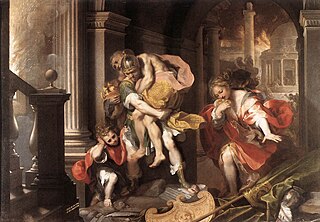
The Aeneid is a Latin epic poem that tells the legendary story of Aeneas, a Trojan who fled the fall of Troy and travelled to Italy, where he became the ancestor of the Romans. Written by the Roman poet Virgil between 29 and 19 BC, the Aeneid comprises 9,896 lines in dactylic hexameter. The first six of the poem's twelve books tell the story of Aeneas' wanderings from Troy to Italy, and the poem's second half tells of the Trojans' ultimately victorious war upon the Latins, under whose name Aeneas and his Trojan followers are destined to be subsumed.
In Greek mythology, Idmon may refer to the following individuals:
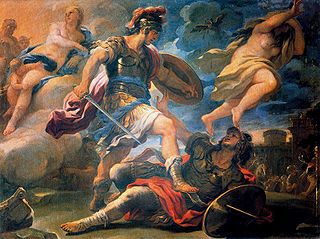
Turnus was the legendary King of the Rutuli in Roman history, and the chief antagonist of the hero Aeneas in Virgil's Aeneid.

In Roman mythology, Lavinia is the daughter of Latinus and Amata, and the last wife of Aeneas.

The Eclogues, also called the Bucolics, is the first of the three major works of the Latin poet Virgil.
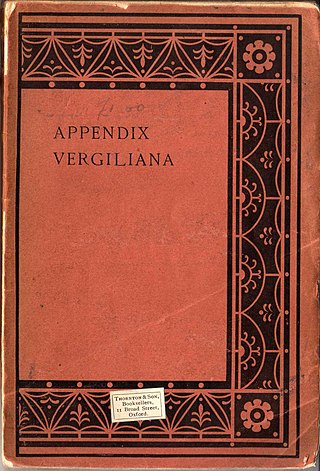
The Appendix Vergiliana is a collection of Latin poems traditionally ascribed as being the juvenilia of Virgil.
Gyas, a character in Virgil's Aeneid, features most extensively as one of the captains in the boat race in Book 5. He also appears (briefly) in Books 1 and 12. He was claimed as the eponymous ancestor of the Gegania gens, a patrician family of the Roman Republic.
Darkness Visible is a phrase from Milton's poem Paradise Lost. It may refer to:
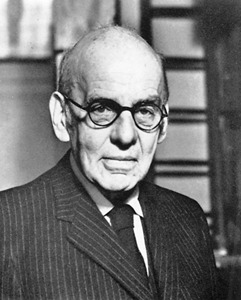
Eduard David Mortier FraenkelFBA was a German classical scholar who served as the Corpus Christi Professor of Latin at the University of Oxford from 1935 until 1953. Born to a family of assimilated Jews in the German Empire, he studied Classics at the universities of Berlin and Göttingen. In 1934, antisemitic legislation introduced by the Nazi Party forced him to seek refuge in the United Kingdom where he eventually settled at Corpus Christi College.

Alecto is one of the Erinyes (Furies) in Greek mythology.

Sir Roger Aubrey Baskerville Mynors was an English classicist and medievalist who held the senior chairs of Latin at the universities of Oxford and Cambridge. A textual critic, he was an expert in the study of manuscripts and their role in the reconstruction of classical texts.

Eclogue4, also known as the FourthEclogue, is a Latin poem by the Roman poet Virgil. The poem is dated to 40 BC by its mention of the consulship of Virgil's patron Gaius Asinius Pollio.
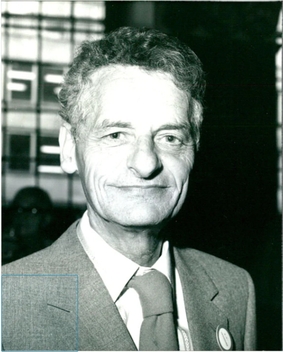
Karl Watts Gransden was a British poet and an editor, translator, scholar, and teacher of Latin and English literature. He spent his career at the British Museum and the University of Warwick.
Nicholas Mark Horsfall was a British scholar of Latin literature. Educated at Peterhouse, Cambridge, and Corpus Christi College, Oxford, he worked as a lecturer at University College London, but retired in 1987. He was a specialist on the works of the Roman poet Vergil and published five commentaries (2000–2013) on individual books of his Aeneid. This series of commentaries was described by the Latinist James O'Hara as "one of the most remarkably productive and rich periods of publication of any modern classicist".

Corynaeus is the name of one or more characters in Virgil's Aeneid (29–19 BCE). The first mention of Corynaeus in the poem is as a Trojan follower of Aeneas, who performs funerary rites for Misenus. Characters of the same name are then specified both as being killed by an archer, and later fighting in the final battle. This apparent contradiction is often explained by defining them as two separate characters.
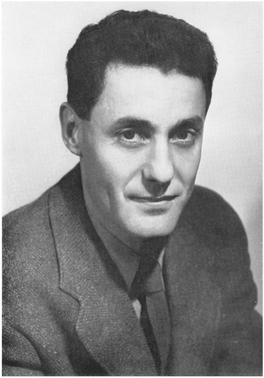
Adam Milman Parry was an American classical scholar. He worked on Greek and Latin history literature, particularly the works of Thucydides, Homer and Virgil, and was a founding figure of the scholarly movement that became known as the Harvard School of criticism into Virgil's Aeneid.
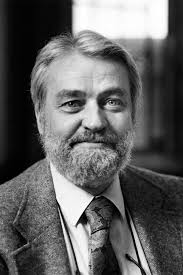
Walter Ralph Johnson, commonly known as W. Ralph Johnson and published as W. R. Johnson, was an American classicist. He was the John Matthews Manly Distinguished Service Professor in the Department of Classics at the University of Chicago from 1989 to 1998.















